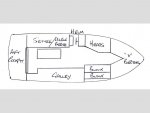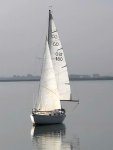G
Guest
Guest
We have developed a way of showing the difference of engine rpm in the form of a bargraph. Center zero with the bar moving to the left or right depending on the difference between the engine rpm. We sense the engine rpm on deisel by a sensor on the fuel line. Is this Useful? and what display would owners of twin engines like to see? what accuracy between the engines would be practical?
Rob
Rob






